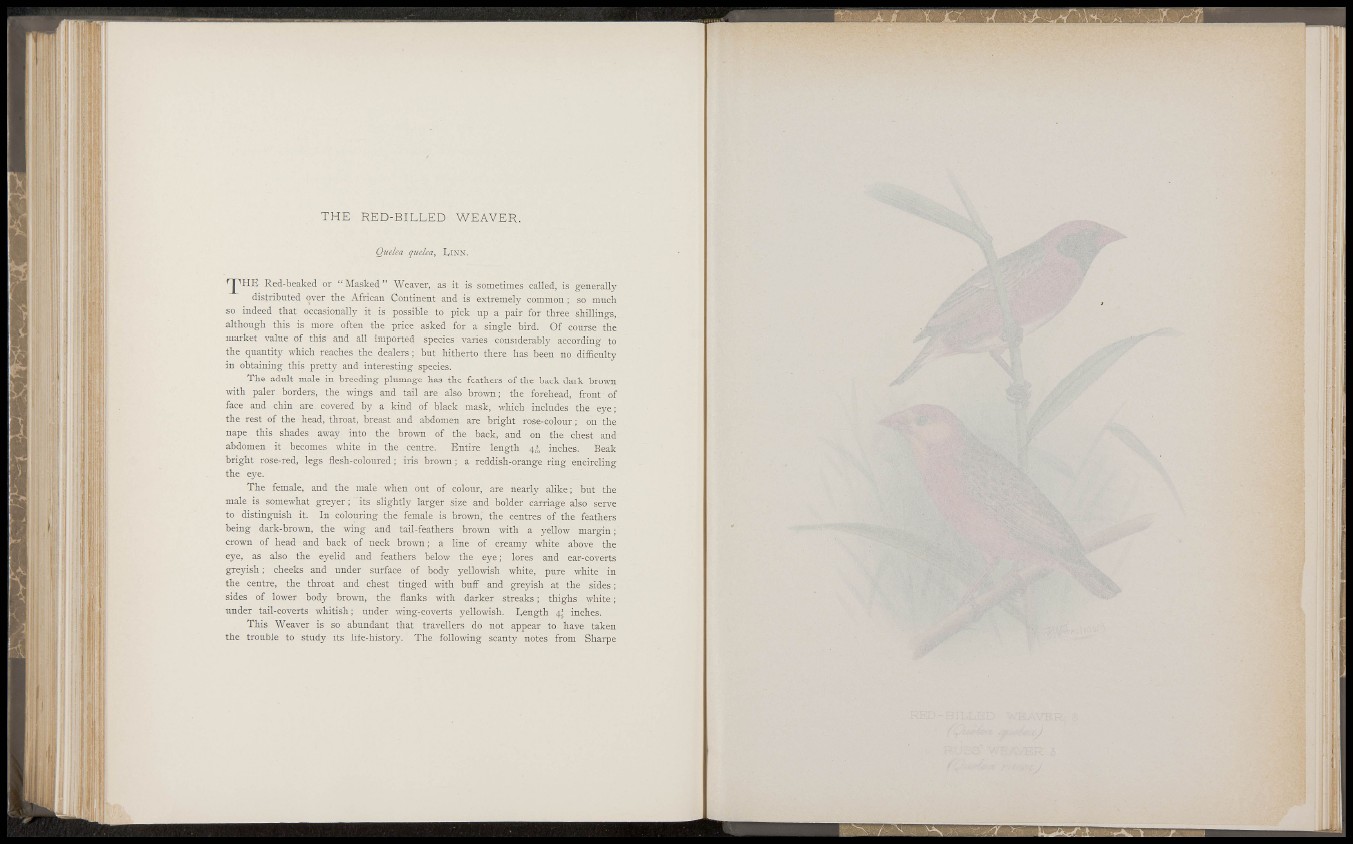
THE RED-BILLED WEAVER.
Quelea quelea, LINN.
i
• 1
, I
( • I • k.
f J ^ H E Red-beaked or "Masked" Weaver, as it is sometimes called, is generally
distributed over the African Continent and is extremely common ; so much
so indeed that occasionally it is possible to pick up a pair for three shillings,
although this is more often the price asked for a single bird. Of course the
market value of this and all imported species varies considerabl3r according to
the quantity which reaches the dealers ; but hitherto there has been no difficulty
in obtaining this pretty and interesting species.
The adult male in breeding plumage has the feathers of the back dark brown
with paler borders, the wings and tail are also brown; the forehead, front of
face and chin are covered b)? a kind of black mask, which includes the eye;
the rest of the head, throat, breast and abdomen are bright rose-colour; on the
nape this shades away into the bro%vn of the back, and on the chest and
abdomen it becomes white in the centre. Entire length inches. Beak
bright rose-red, legs flesh-coloured ; iris brown ; a reddish-orange ring encircling
the eye.
The female, and the male when out of colour, are nearly alike; but the
male is somewhat greyer ; its slightly larger size and bolder carriage also serve
to distinguish it. In colouring the female is brown, the centres of the feathers
being dark-bro\TO, the wing and tail-feathers bro-ivn with a yellow margin ;
crown of head and back of neck brown; a line of creamy white above the
eye, as also the eyelid and feathers below the eye; lores and ear-coverts
greyish ; cheeks and under surface of body yellowish white, pure white in
the centre, the throat and chest tinged with buff and greyish at the sides ;
sides of lower body brown, the flanks with darker streaks ; thighs white ;
under tail-coverts whitish; under wing-coverts yellowish. Length 4, inches.
This Weaver is so abundant that travellers do not appear to have taken
the trouble to study its life-histor>'. The follo^ving scanty notes from Sharpe
i !